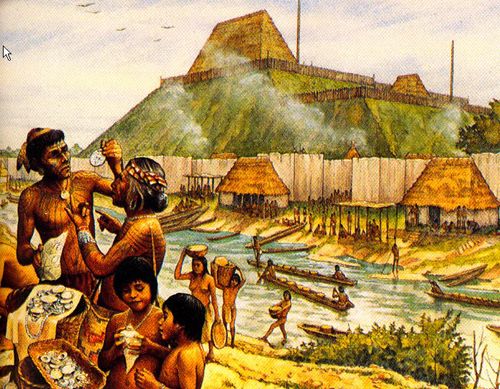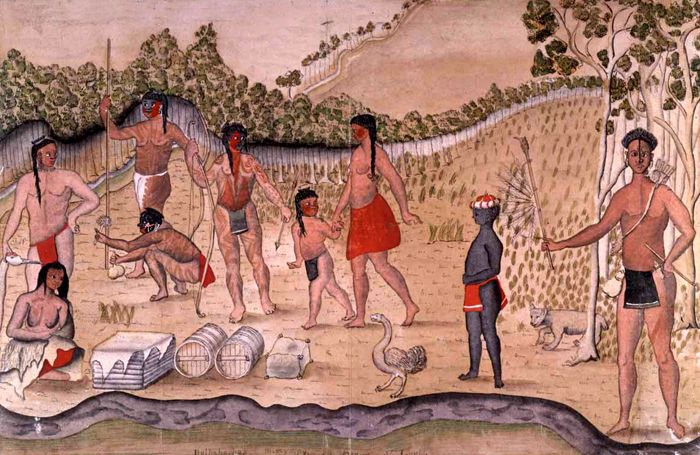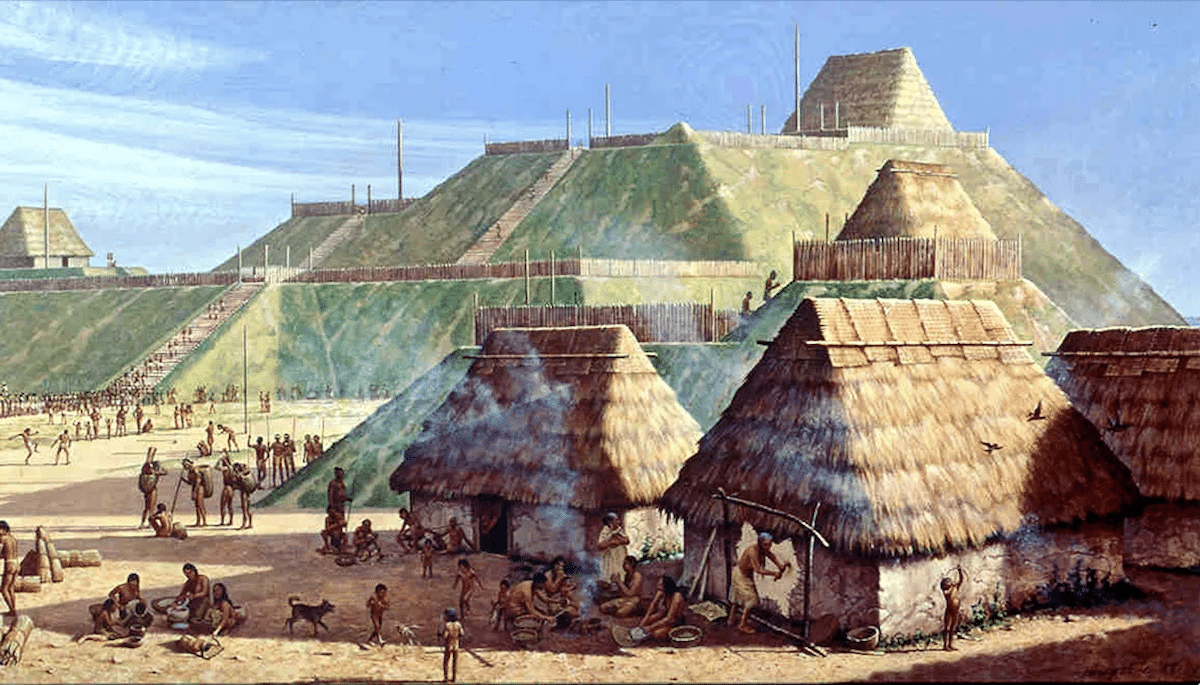
Okay, here is a 1,200-word journalistic article in English about the Cahokia Indians.
Cahokia: Unearthing America’s Forgotten Metropolis
Imagine a city, larger than London at its peak, bustling with tens of thousands of inhabitants, a monumental testament to human ingenuity and social complexity. Now imagine this city thriving not in ancient Mesopotamia or the Andes, but in the heart of North America, centuries before Columbus set sail. This is Cahokia, a name that, for too long, remained a whisper in the annals of history, but one that increasingly demands its rightful place as North America’s first and most sophisticated metropolis.

Located just across the Mississippi River from modern-day St. Louis, Missouri, the Cahokia Mounds State Historic Site today stands as a UNESCO World Heritage site, a silent, grassy echo of a once-vibrant civilization. Its colossal earthen mounds, particularly the awe-inspiring Monk’s Mound, challenge the long-held myth of a "virgin wilderness" inhabited solely by nomadic hunter-gatherers before European arrival. Cahokia was an urban marvel, a planned city that flourished from roughly 1050 to 1200 CE, and its story forces us to fundamentally rethink the narrative of ancient North America.
The Rise of a City
Cahokia didn’t emerge overnight. Its origins lie in the Mississippian culture, a broad pre-Columbian tradition that developed across the southeastern and midwestern United States. What set Cahokia apart was the sheer scale and speed of its development. Around 1050 CE, a dramatic transformation occurred, dubbed "the Big Bang" by archaeologists. Within a generation, scattered farming villages coalesced into a highly organized urban center.
At its zenith, Cahokia was home to an estimated 10,000 to 20,000 people within its central precinct, with another 20,000 to 30,000 living in surrounding settlements, making its total population comparable to, or even exceeding, that of contemporary European cities like London or Paris. This was a true metropolis, encompassing an area of nearly six square miles, meticulously planned with plazas, residential zones, and ceremonial centers.
The heart of this city was the Grand Plaza, a vast, flat expanse of land covering some 50 acres, meticulously leveled and maintained. Around this plaza, more than 120 mounds of various sizes and functions were constructed. But none rivaled the sheer immensity of Monk’s Mound.
Monk’s Mound: An Earthen Colossus
Monk’s Mound is not just a hill; it’s a man-made mountain, the largest earthen structure in the Americas. Rising over 100 feet high, its base covers an astonishing 14 acres, making it larger in footprint than the Great Pyramid of Giza. It required an estimated 22 million cubic feet of earth, transported basket by basket, over decades. Imagine the coordinated labor, the centralized authority, and the societal vision required for such an undertaking.
"Monk’s Mound is a testament to the power and sophistication of the Cahokian leadership," explains Dr. Timothy Pauketat, a leading archaeologist and expert on Cahokia. "It wasn’t just a platform for a temple or a chief’s residence; it was a symbol, a beacon, a cosmic axis around which their world revolved."

From its summit, a paramount chief or spiritual leader would have presided over ceremonies, addressing thousands gathered in the plaza below. It served as a political and religious focal point, demonstrating the absolute authority and spiritual legitimacy of Cahokia’s elite.
Daily Life in the Urban Core
Life in Cahokia was complex and specialized. While maize (corn) was the dietary staple, providing the caloric foundation for such a large population, the city was far from a simple agricultural settlement. Evidence suggests a diverse economy driven by skilled artisans, traders, and administrators.
Craftsmen produced intricate pottery, tools made from chert sourced from distant quarries, and ceremonial objects from copper, which came from as far north as Lake Superior. Shells from the Gulf Coast were fashioned into beads and pendants, signifying a vast and sophisticated trade network that stretched across much of the North American continent.
Residential areas fanned out from the central plaza, featuring single-family homes and multi-family compounds, built with timber frames and wattle-and-daub walls, often with thatched roofs. A large wooden palisade, 15 to 20 feet high and stretching for two miles, encircled the central ceremonial district, suggesting a need for defense, perhaps against rival chiefdoms or internal unrest as the city grew. This palisade was rebuilt several times, each time requiring thousands of logs, a monumental feat in itself.
Cosmic Alignments and Ritual Power
The Cahokians possessed an advanced understanding of astronomy and engineering. They constructed several "Woodhenges" – large circles of precisely placed wooden posts that functioned as astronomical calendars, marking the solstices and equinoxes. The most famous, Woodhenge III, aligns perfectly with the sunrise on the equinoxes and solstices when viewed from the center of Monk’s Mound, illustrating a profound connection between their urban planning, spiritual beliefs, and the cosmos.
But Cahokia’s power also had a darker, more ritualistic side, particularly evident in the discoveries at Mound 72. This ridge-top mound, excavated in the 1960s and 70s, revealed a chilling and fascinating glimpse into the society’s practices. It contained the remains of an elite male, possibly a paramount chief, laid on a bed of over 20,000 shell beads arranged in the shape of a falcon, a powerful symbol in Mississippian iconography.
Surrounding him were the remains of hundreds of sacrificed individuals. Among them were four young males, headless and handless, likely sacrificed retainers. Elsewhere in the mound were mass graves containing dozens of young women, aged 15-25, buried together, seemingly in a single event. There were also individuals who had been deliberately buried alive. These findings suggest a society where human sacrifice played a significant role in demonstrating the power of the ruling elite, appeasing deities, or ensuring cosmic order.
The Mystery of the Decline
Just as rapidly as it rose, Cahokia began to decline around 1200 CE. By 1400 CE, the once-thriving metropolis was largely abandoned, its monumental mounds left to the forces of nature. The reasons for its collapse are not fully understood, but archaeologists propose a confluence of factors:
- Environmental Degradation: The immense population and continuous construction led to widespread deforestation, soil erosion, and depletion of local resources. This would have made the surrounding environment less sustainable for a large urban center.
- Climate Change: Evidence suggests the region experienced periods of drought and a shift in climate patterns (the "Little Ice Age"), which could have severely impacted maize harvests, leading to food shortages and social unrest.
- Internal Strife and Warfare: The repeated rebuilding of the palisade around the central city indicates growing tensions, possibly with rival chiefdoms or internal factions vying for power. The elaborate rituals and sacrifices could also have been attempts to maintain control in an increasingly unstable society.
- Disease: High population density could have facilitated the spread of infectious diseases, though direct evidence for this is scarce.
- Political Decentralization: As resources dwindled and challenges mounted, the centralized authority that built Cahokia may have fractured, leading to a migration of people to smaller, more manageable settlements.
"Cahokia’s decline is a cautionary tale," says Dr. Sarah Baires, an archaeologist who has worked at the site. "It illustrates the fragility of even the most powerful societies when faced with environmental stress and internal pressures. It’s a story of sustainability and collapse that resonates even today."
A Legacy Rediscovered
For centuries, Cahokia lay hidden in plain sight, its mounds often mistaken for natural hills. Early European settlers and missionaries noted the mounds, but their true significance was not recognized until systematic archaeological excavations began in the 20th century. Pioneers like Warren K. Moorehead and later Melvin L. Fowler and Timothy Pauketat, painstakingly uncovered the city’s secrets, revealing its true scale and complexity.
Today, Cahokia Mounds State Historic Site offers visitors a chance to walk among these ancient monuments, to climb Monk’s Mound and gaze out over the vast plain where a sophisticated civilization once thrived. An excellent interpretive center helps contextualize the site, sharing the stories of the people who built this forgotten metropolis.
Cahokia’s story is more than just a chapter in the history of archaeology; it is a fundamental reevaluation of pre-Columbian North America. It demonstrates that indigenous peoples were not static, primitive societies, but capable of creating complex urban centers, intricate social structures, advanced astronomical knowledge, and vast trade networks. Cahokia forces us to acknowledge a rich, vibrant, and deeply human history that predates the arrival of Europeans, a history that continues to whisper its secrets from beneath the earth. It stands as a powerful reminder that some of the greatest achievements of human civilization were born, flourished, and ultimately faded, on American soil.


